When we arrived in Maun, gateway to the Delta, we looked up where the Parks department was so we could arrange for our stay at the various camps in the Delta and Botswana in general.
There we got the shock of our life. Entry fee for the two of us in any park in Botswana: acceptable. Camping fees: acceptable. Car fee: exorbitant! Normal cars/bakkies/suv’s can drive into any park in Botswana at 50 Pula per vehicle (that’s about R75, $5). Trokkie’s entrance fee: a whopping 1500 Pula (R2000, $113) per day! That, all of a sudden, had a really serious impact on our Botswana leg of the trip!
Why? Because we’re heavy! This is how the prices are determined:
- Up to 3,5 ton: 50 Pula
- 3,5 ton to 7 ton: 1000 Pula
- more than 7 ton (us) is 1500 Pula.
When we chatted to the driver of a local safari lodge vehicle later in the park, the explanation was that our vehicle damages the road. I don’t swear often, but that is total B.S.! Nobody is going to tell me that our vehicle sauntering through the parks at 20km per hour is doing more damage than 30 normal campers! We’ve seen places where a tree fell over the path and all the “normal campers and safari vehicles” got themselves around the obstacle and just created another path in the bush! Isn’t that even greater damage than just a heavy vehicle with a wider tire basis slowly following the paths? As you can read…. this really got me riled up. We have met normal bakkies/suv’s with rooftop tent and loaded to the hilt and we know that some of them weighted more than the 3.5 ton cut-off for minimum entry fee. If vehicles are charged according to weight, then every park should have a weighbridge, so that even the suv’s that are 4 or even 4,5 ton pay their 1000 Pula instead of 50 Pula. Fair is fair. It would be interesting to see how quick there would be an outcry!
Ok, moving on from my rant… seeing these exorbitant fees, we decided on only 3 days in Moremi, with 2 nights at Xakanaxa bush camp. We paid our fees, but before we left we went looking for sand tracks. Seeing our previous adventures in various sandy spots and Moglet’s lifesaving sand tracks at Mudumu, we had decided that we HAD to find sand tracks. We found them and I think we bought the last 2! Now we were prepared for all eventualities and off we went, another 100km more north, to the entrance of Moremi.
The first part of the road was tarred and not too potholed. The last section was gravel road with parts that were so badly corrugated that we progressed at anything between walking speed and 20km per hour. That resulted in us driving the last few km with amazing sunset over the Moremi bush and arriving at the gate around 7pm. We had anticipated to just park and sleep at the entrance and enter the park the following morning. The lady at reception however said we were not to stand there as it was “dangerous”. While we retreated to Trokkie, she went looking for someone who could show us where it would be safe to stand and sleep. We waited and waited and 2 hours later, we hadn’t seen anybody yet. We decided to go to bed.
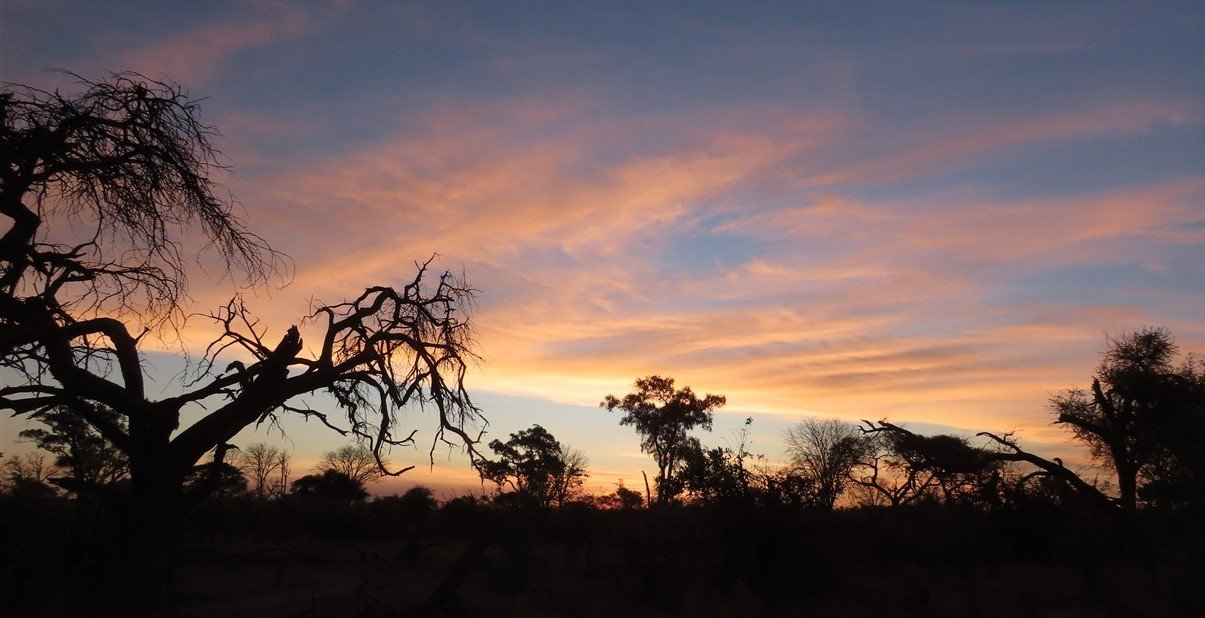
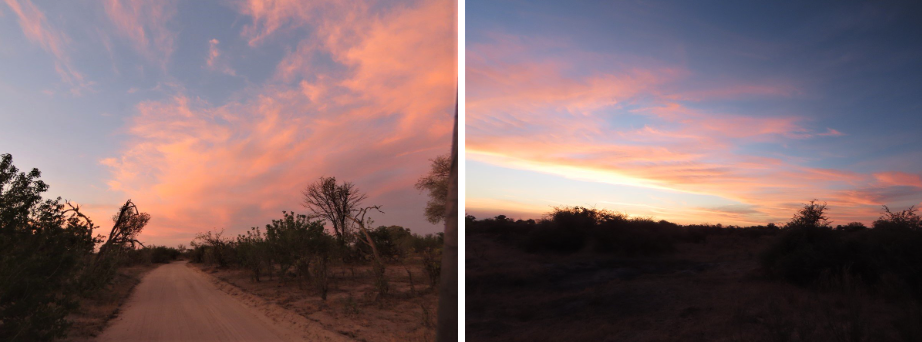
Even before we had our morning coffee, we entered the park: at these prices we had to make every minute count. And then we spent the next 3 days touring around that part of the Delta.
On the track between Moremi South Gate and the Xakanaxa camp gate we did a few detours on side tracks and saw our first few residents of the park. Not only the real life giraffe and a buck or two, but also the destruction of the bush caused by hungry elephants!
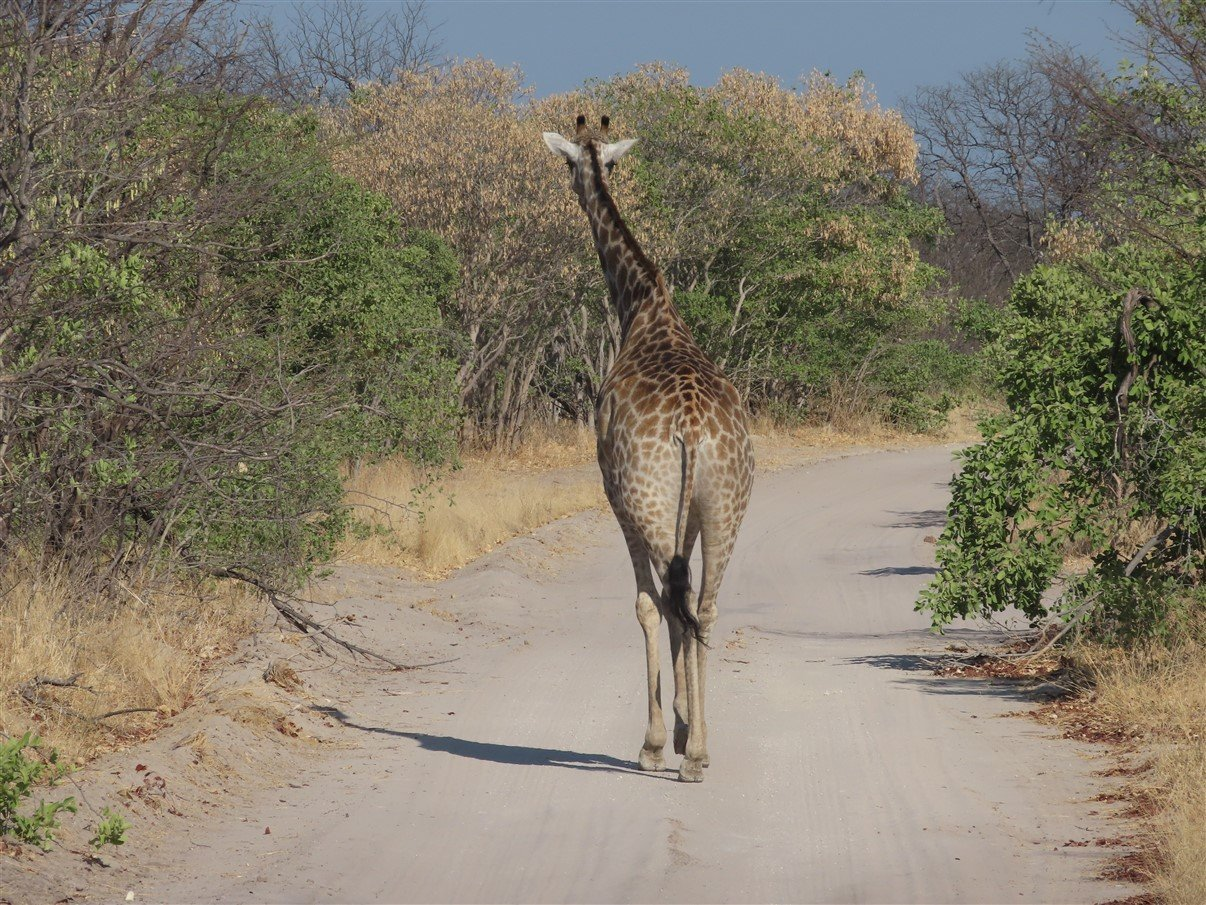
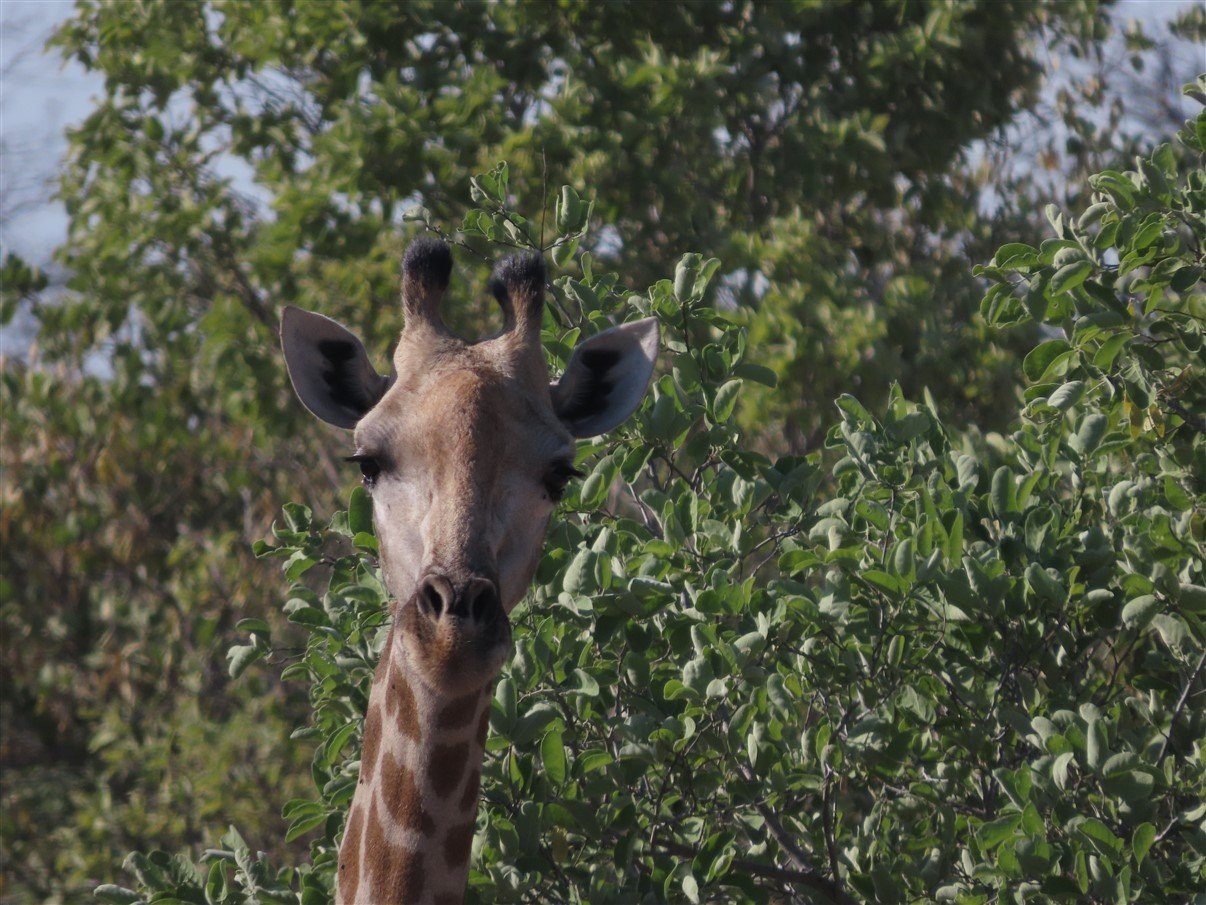
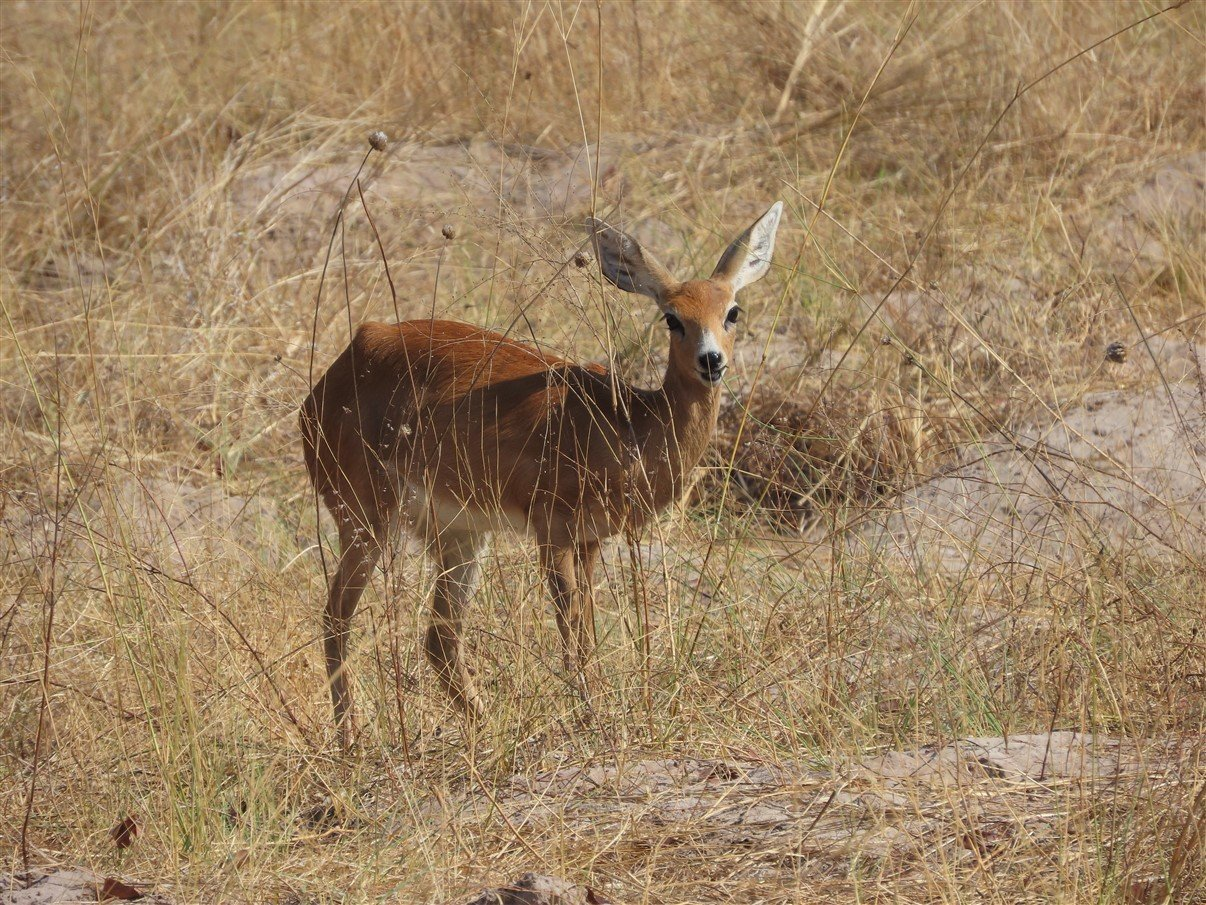
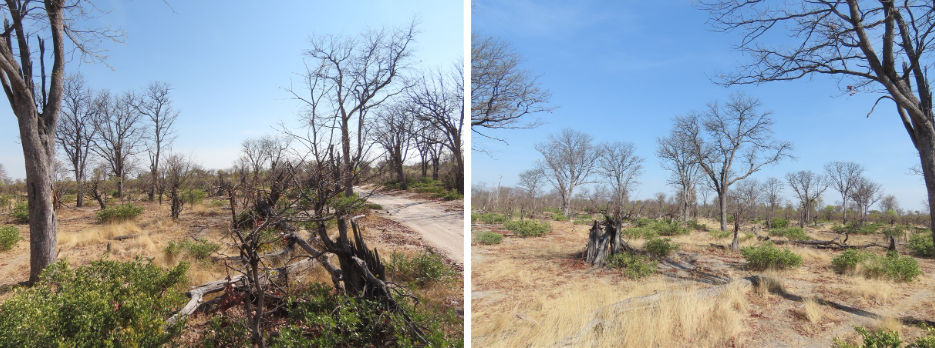
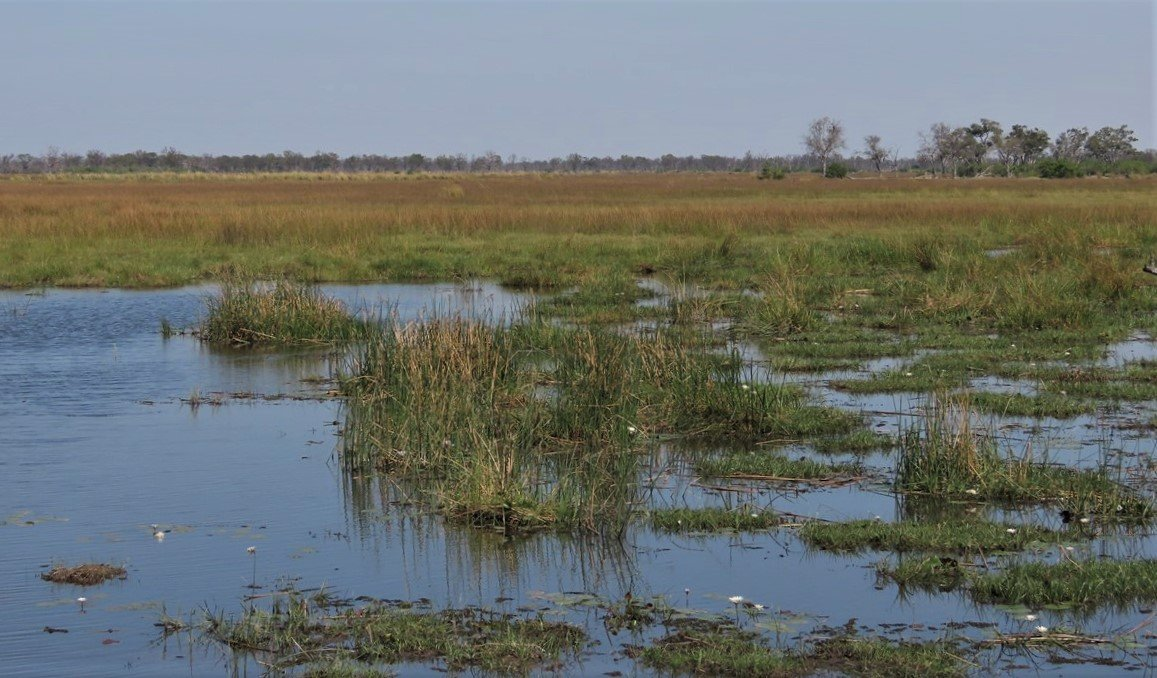
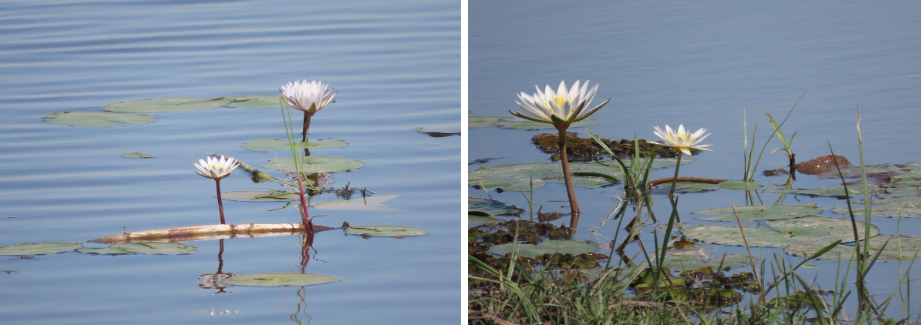
One viewpoint on our detour was Hippo Pools. We crisscrossed the Mopani bush and eventually had lunch at the hippo-hide overlooking the Hippo Pool.
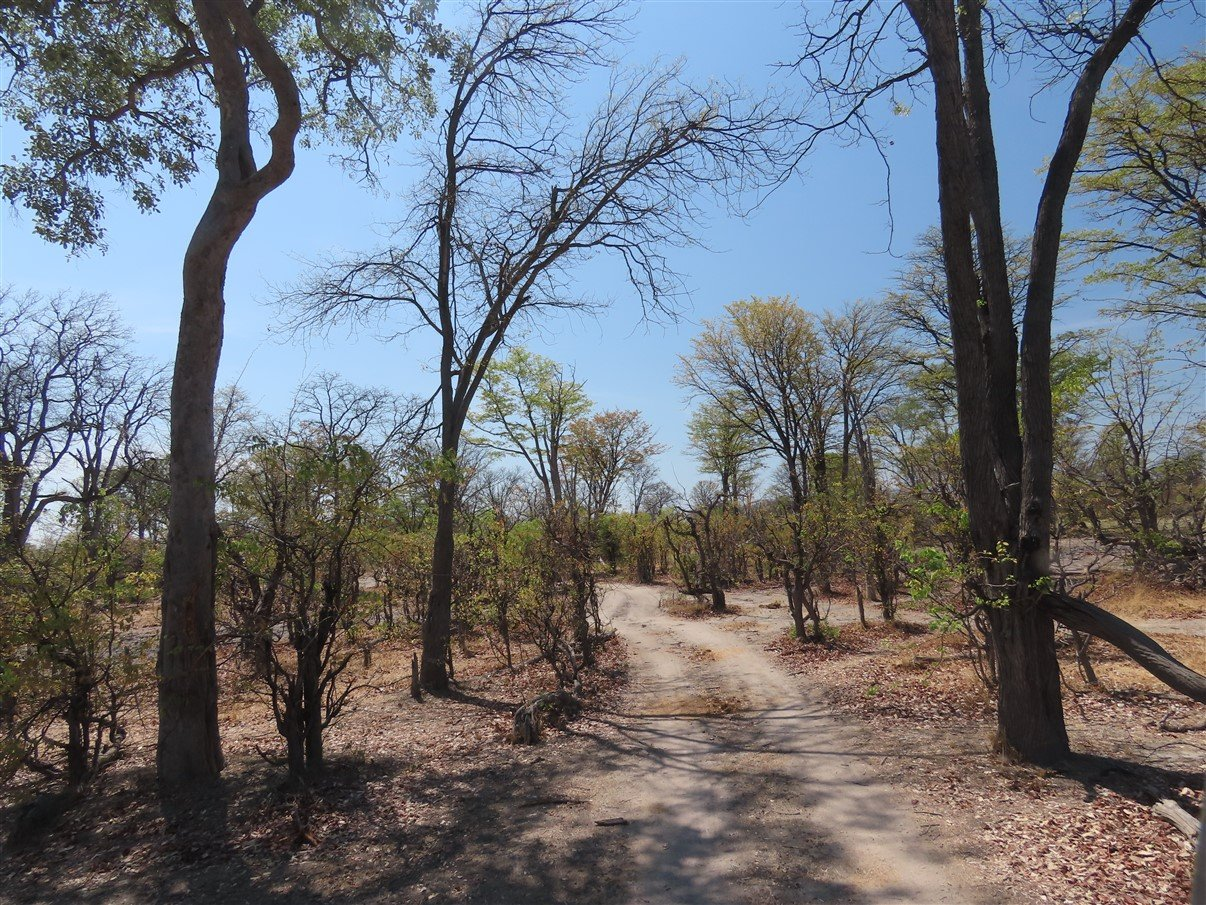
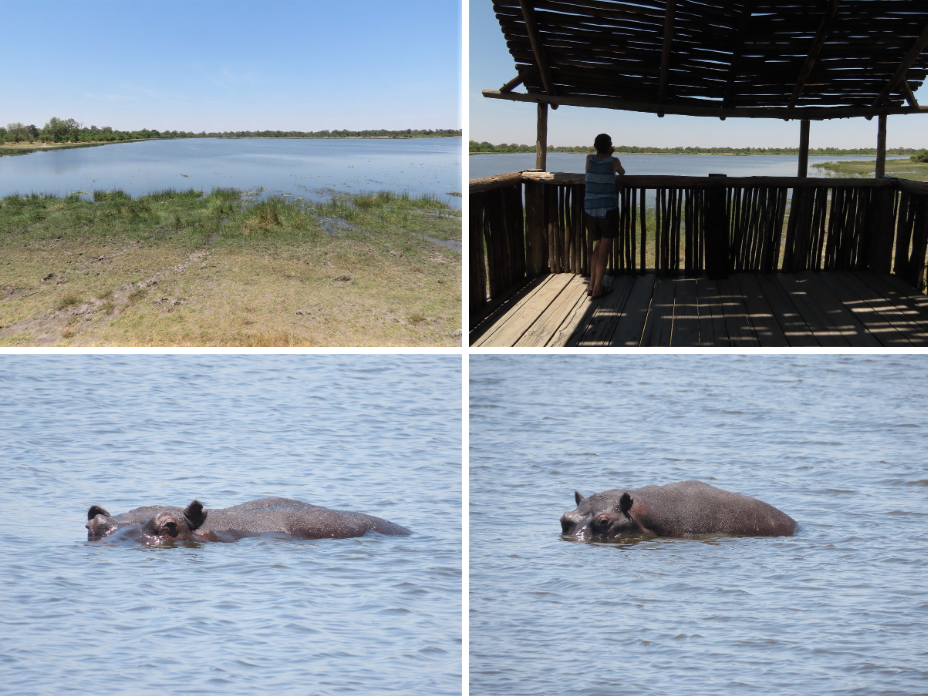
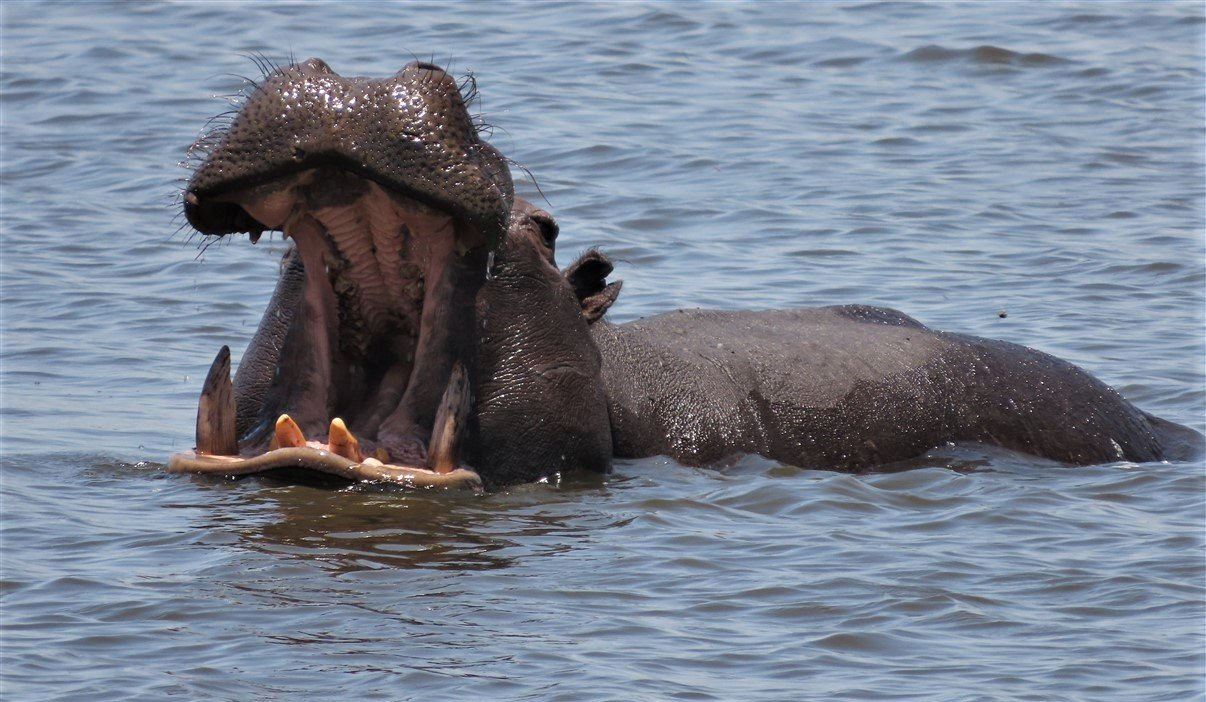
Late in the afternoon we eventually entered the gate to the Xakanaxa camp. From the gate to the actual campsites is still another few km’s of wild bush and we realised this would be wild camping for real. No fences between you, your campsite and the wild life around you. We were used to game parks like Etosha in Namibia and Kruger in South Africa where the rest camps are fenced off. When we closed in to the campsites and our gps said it was only a few meters to go to our assigned campsite, we saw wild buffalo lazyng about under a nearby tree, with little oxpeckers assisting with their daily hygiene routine.
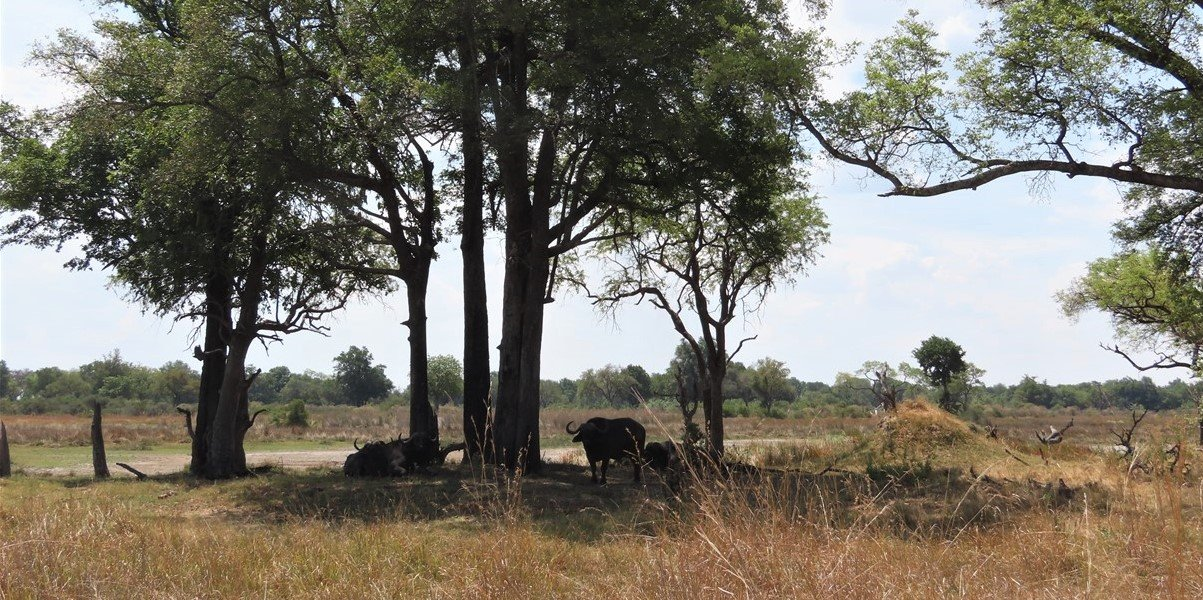
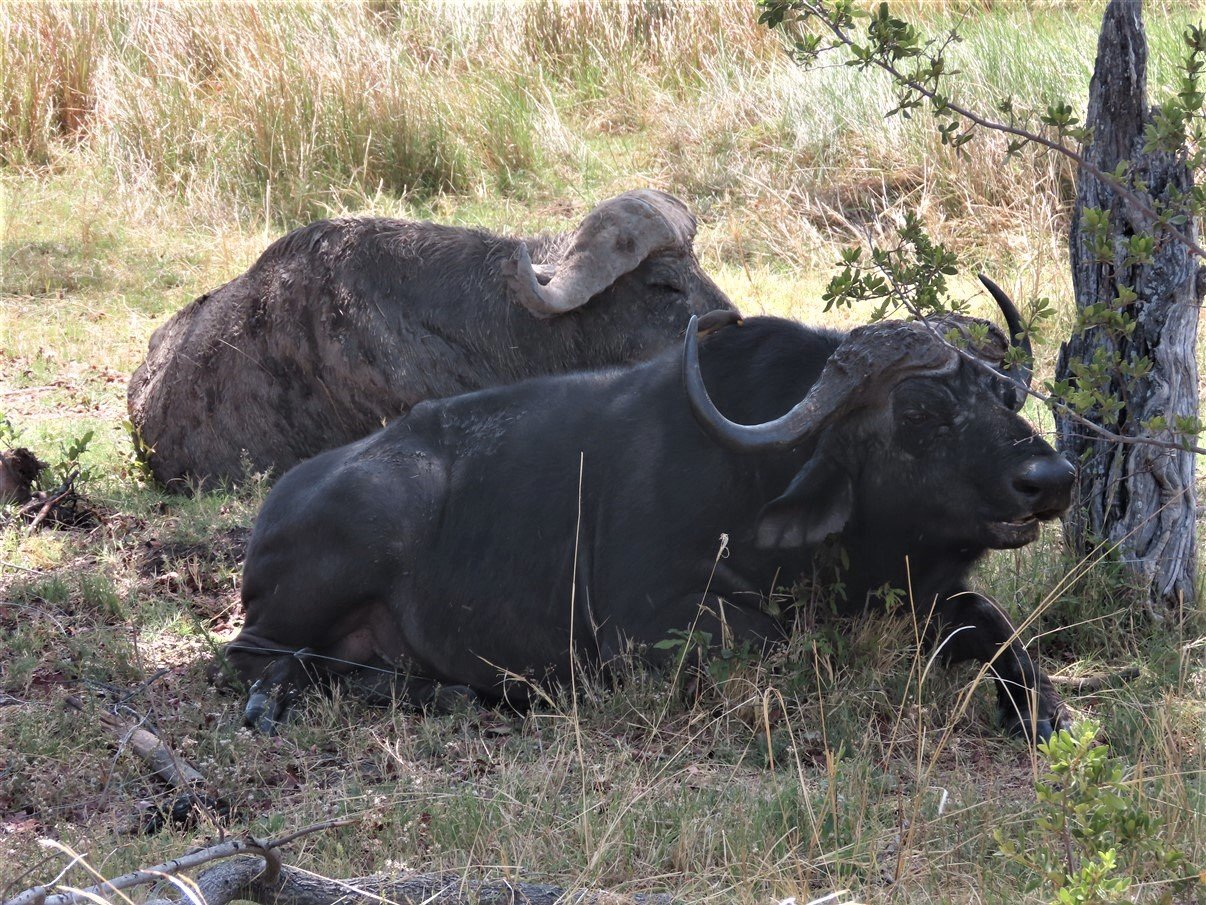
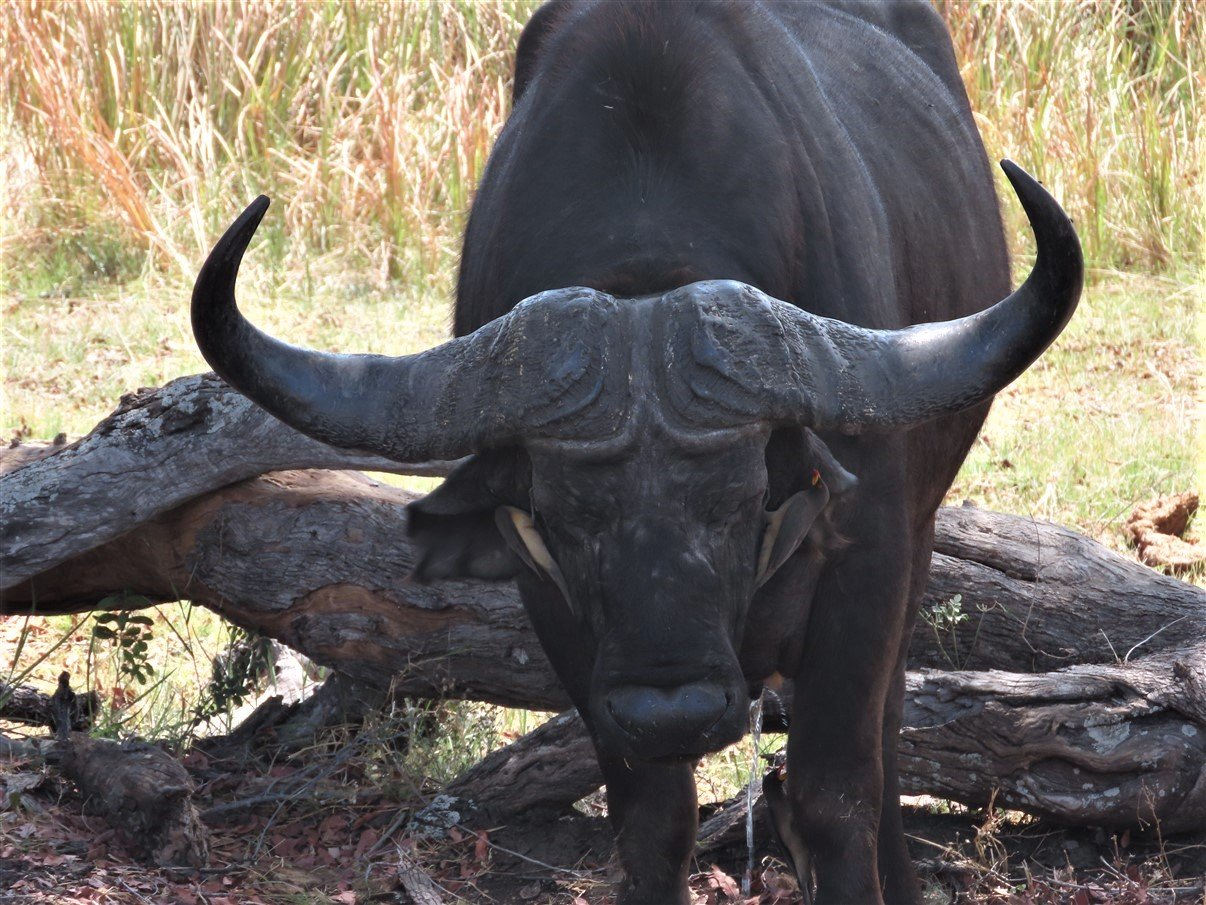
That first evening we joined two Swiss couples on a boat trip on the Okavango and saw the resident hippo feeling at home between the boats and the tent camps. It was weird to remember that the lady at reception had told us how dangerous it was for us the stand outside the gate instead of being at a camp inside the gate: the camps are unfenced and, as we could see that morning, wildlife calls this place home and is not bothered with human privacy or safety issues. Visitors are warned all the time about the dangers of wild wildlife: the animals walk free!!! Only a few months ago, an employee was killed and a tourist was attacked by a leopard in this particular area! Makes you think!
The boat trip was amazing. Even though it wasn’t in a traditional Mokoro boat, we had spectacular views over the water ways from the upper level of our boat. We had a beautiful sunset in a streaky sky, which reflected in the water like a mirror. We could see from a distance how -what we learned later- local communities burn parts of the Delta in an effort to create smoother passage for the water to reach the far south of the Delta quicker.
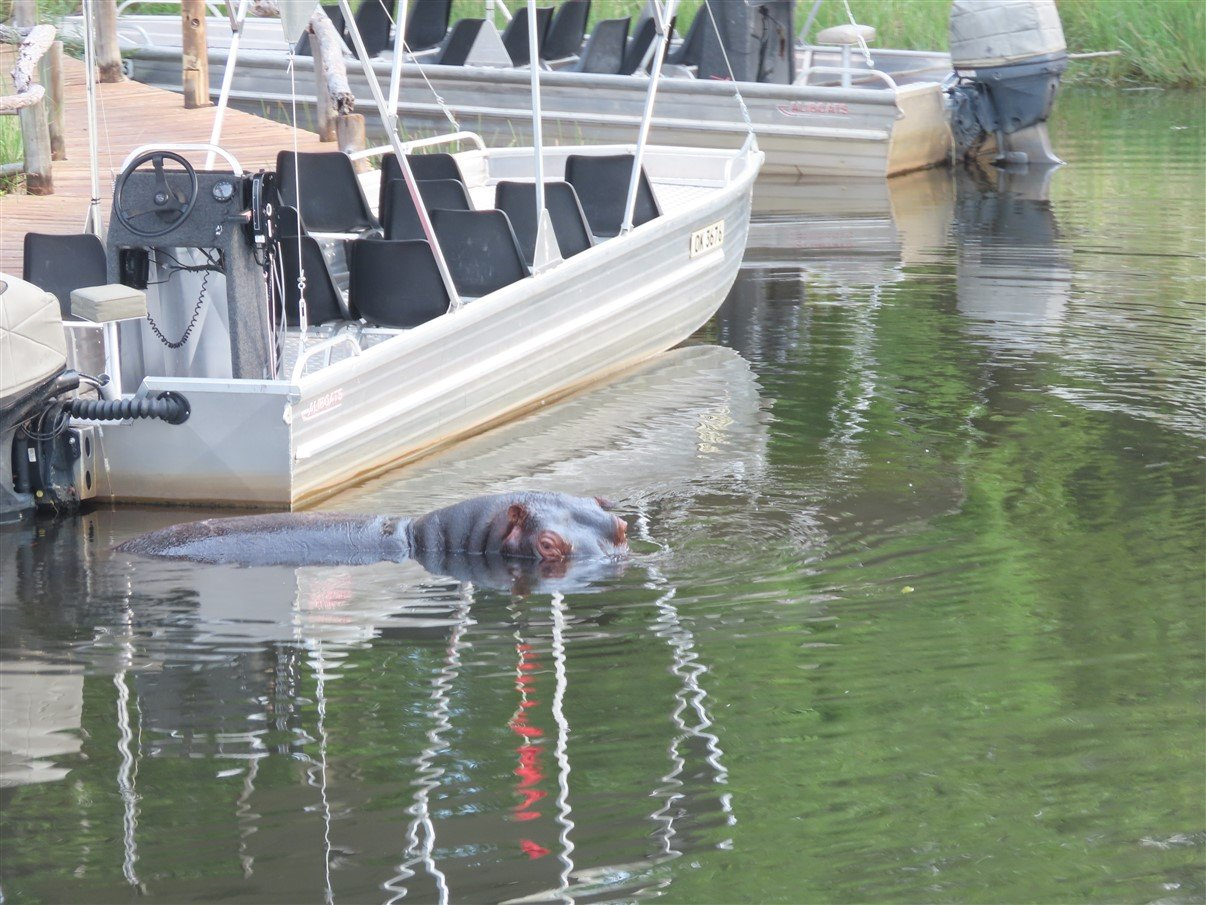
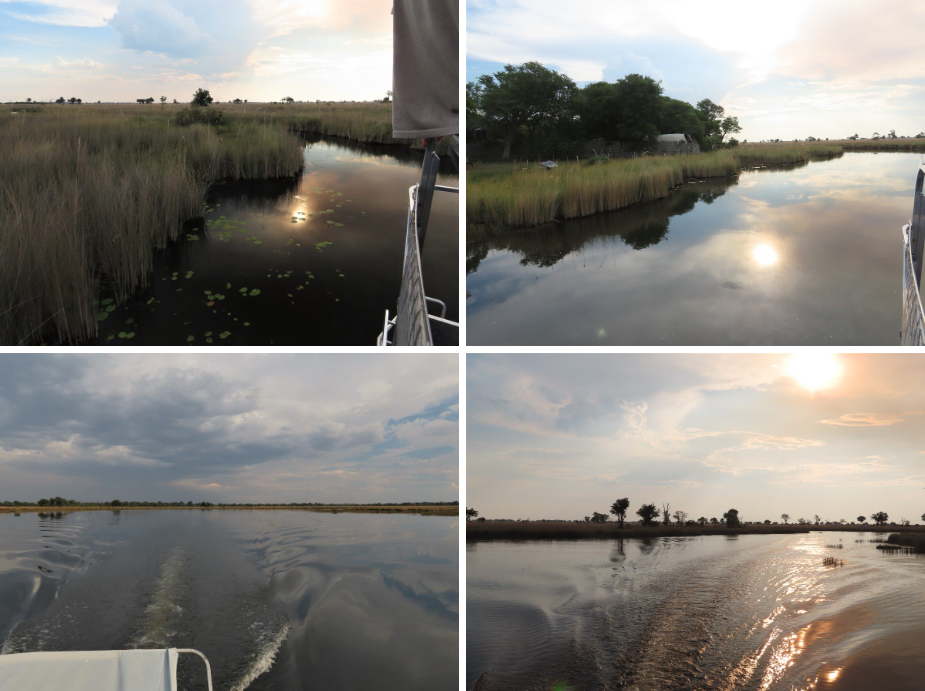
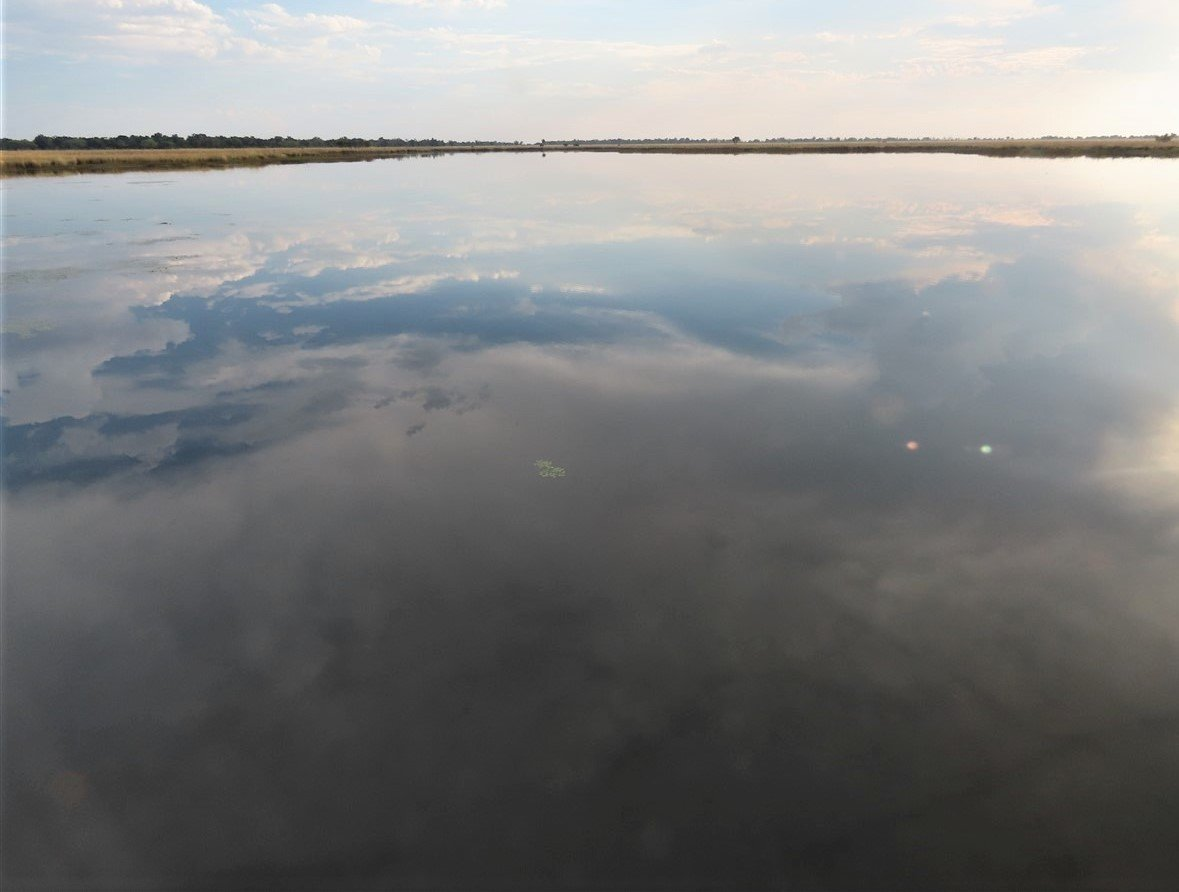
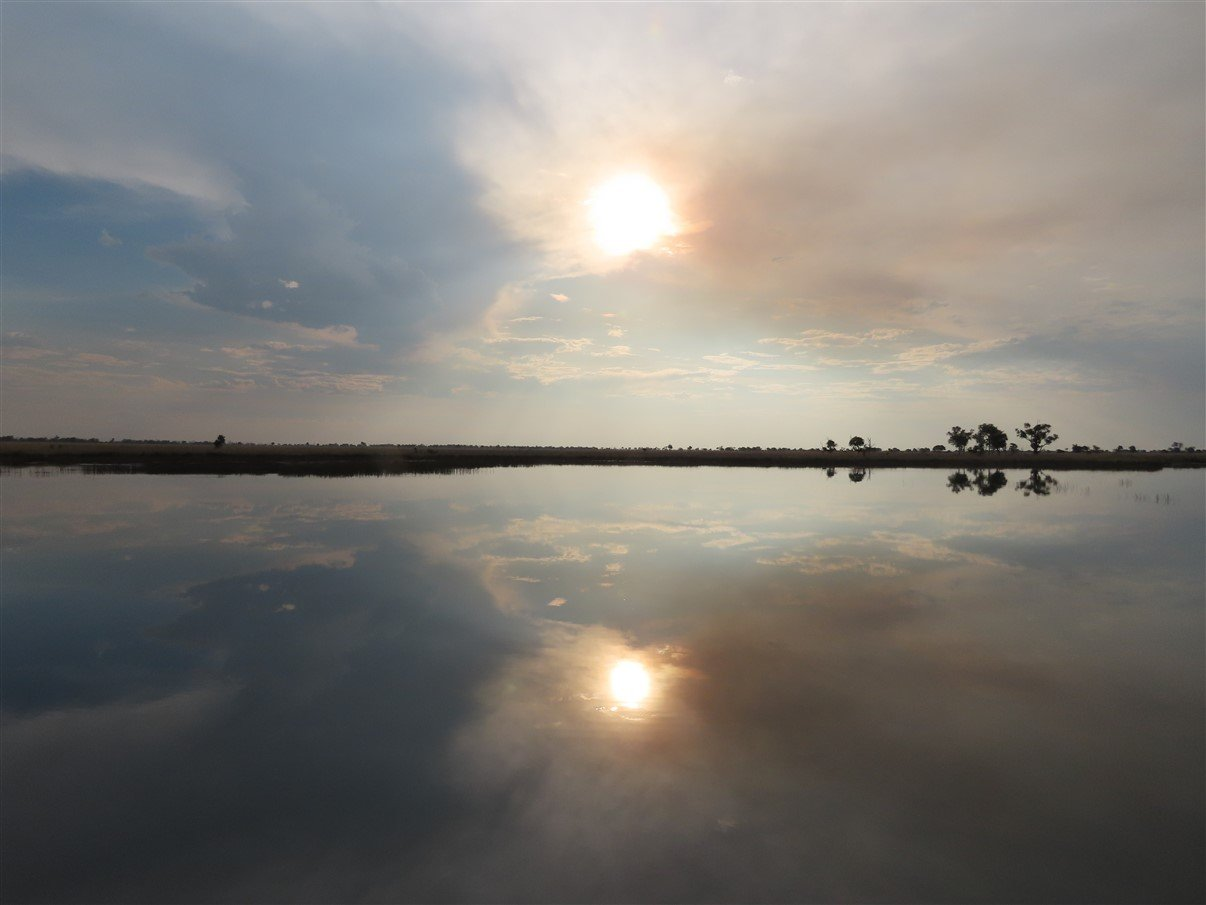
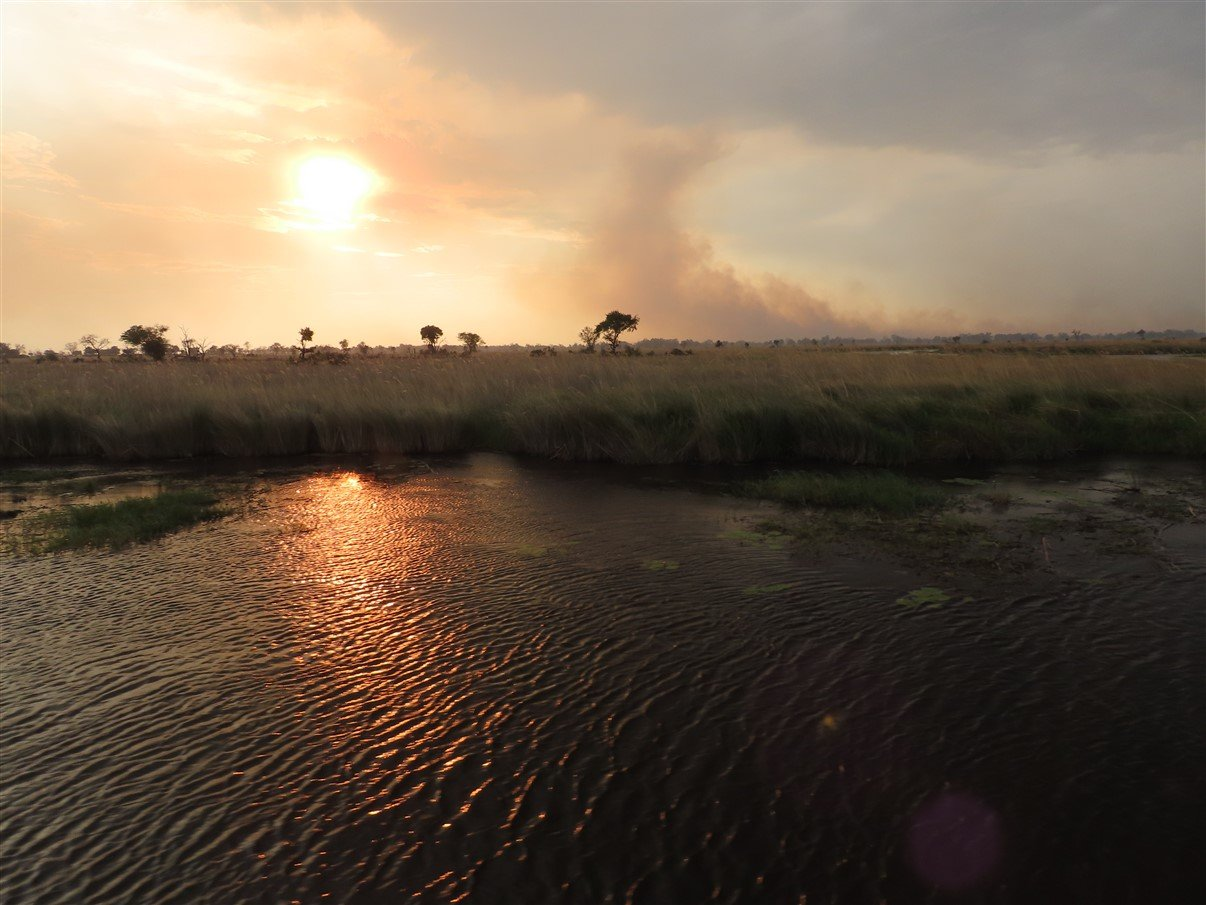
Our first evening in the Delta ended on a high note. Let’s see what the next few days would bring.
For more photos, clips and videos follow us on


Moremi Part 1